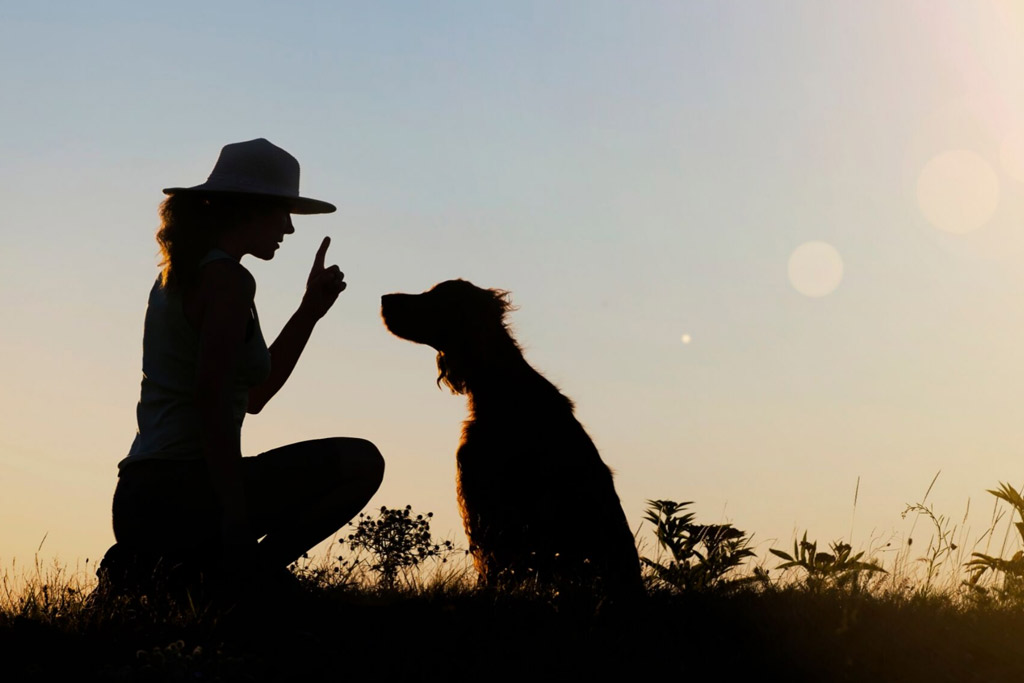
No matter your dog’s age or breed, all dogs need continuous training to keep their mind stimulated and prevent unwanted behaviours mostly due to lack of training and boredom.
Although training a dog can be a big challenge for the owner, I believe that house training starts on day 1.
Let’s discover why.
Understanding Dog Training
First of all, if all dog parents knew the benefits of training, they will probably make time for it in their daily routine.
Dog Training Benefits
Why should you train your dog? Training is an important part of any dog’s life. It provides mental stimulation which helps to keep your dog healthy, happy, and it prevents boredom.
If combined with morning exercise your dog will be mentally and physically tired at the end. If you time it right and have a session before leaving the house, your dog will probably want to sleep while you are away.
Also, dog training has benefits for both dog and dog parent:
- You will have better control over your dog.
- You will be able to keep your dog safe. Your dog will return to you when called in a dangerous situation.
- You will create a stronger bond. Positive reinforcement training is a great way to build trust and mutual respect.
- You will understand your dog better since you will spend quality time with your dog during training.
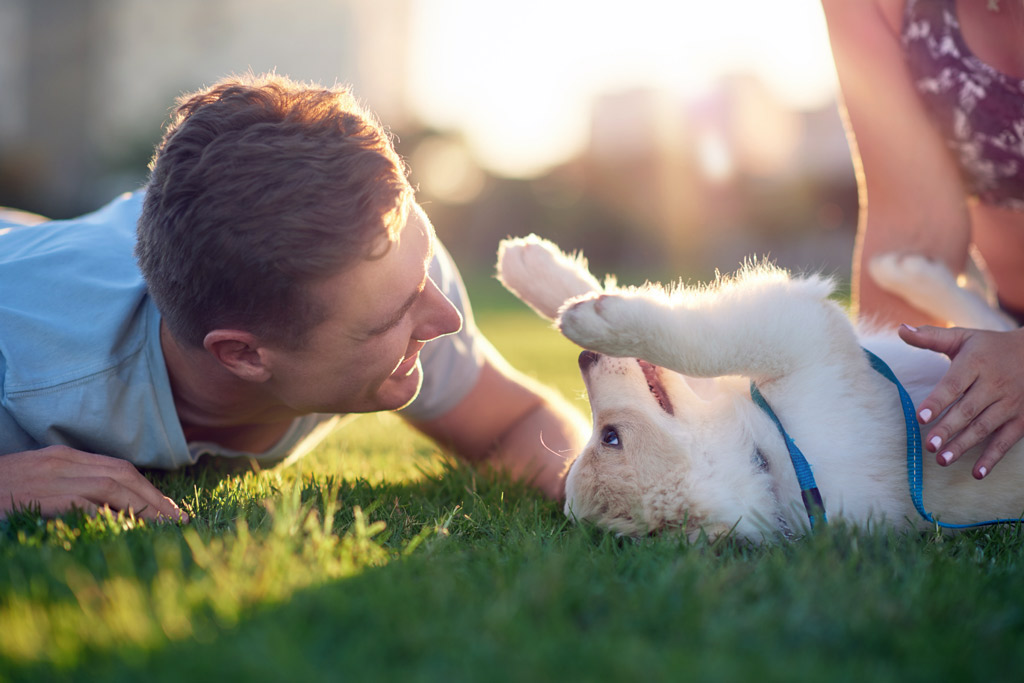
Dog Training Methods
There are a few training methods out there:
- Alpha dog or dominance training: It relies on a dog’s instinctual pack mentality to create a relationship of appropriate submission and dominance. Cesar Millan popularized this training method.
- Positive reinforcement or reward-based training: It consists of rewarding good behaviour immediately after it happens. A method popularized by trainers like Dawn Sylvia-Stasiewicz.
- Science-based training: It relies on information that is continually building and changing.
- Model-rival or mirror training: Dogs learn by observing a model of good behaviour or a rival to compete for resources.
- Relationship-based training: This type combines several different training methods but focuses on a more individualized approach for both dog and owner.
- Etc.
Also, some dog owners like relying on an object whilst training their dogs:
- A clicker. This device makes a quick, sharp noise (a click). It’s used to signal to a dog when a wanted behaviour is accomplished.
- An electronic collar. This collar can deliver a shock or a spray of citronella when a dog is not performing the desired task.
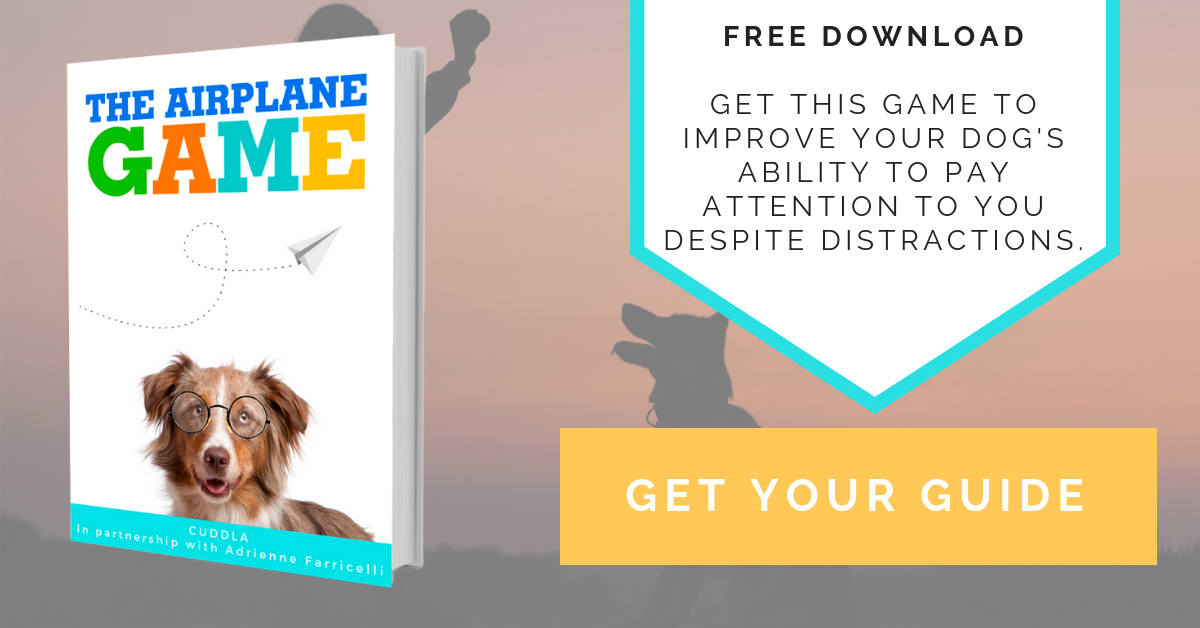
So, what type of training should you go for?
Positive Reinforcement or Reward-Based Training
I personally prefer positive reinforcement training. Reward-based training is not only more successful than other training methods but also means you and your dog can work towards a positive relationship that will serve as a good foundation for future training.
This method consists of rewarding your dog’s good behaviour immediately after it happens with praise, a caress or a healthy treat. The big takeaway of this method is that it encourages your dog to repeat good behaviour.
Reward-based training also involves generally ignoring any ‘unwanted’ behaviours. If dogs are not rewarded (i.e. receives no attention or treats) for a certain behaviour, then they tend to stop doing it.
For example, if your dog is jumping up to greet people, it’s more effective to ignore this behaviour. He should only receive attention (including eye contact) when he has four paws on the ground. Then, you can reward your pooch with attention and treats.
Insider Tip: Dogs interpret any attention (eye-contact, yelling or getting angry) as a reinforcement of behaviour. They will perceive a reaction from you as getting attention, and any form of attention/reaction from the owner is better than no reaction at all.
That’s why I want to point out that shouting “no!” or “bad dog!” rarely works in the long term. Dogs won’t understand that they are doing something wrong if they get attention from you.
Training should be fun! If you want to know more about reward-based training and how to implement it in an enjoyable way, check my favourite training method.
Here’s an example of positive reinforcement training:
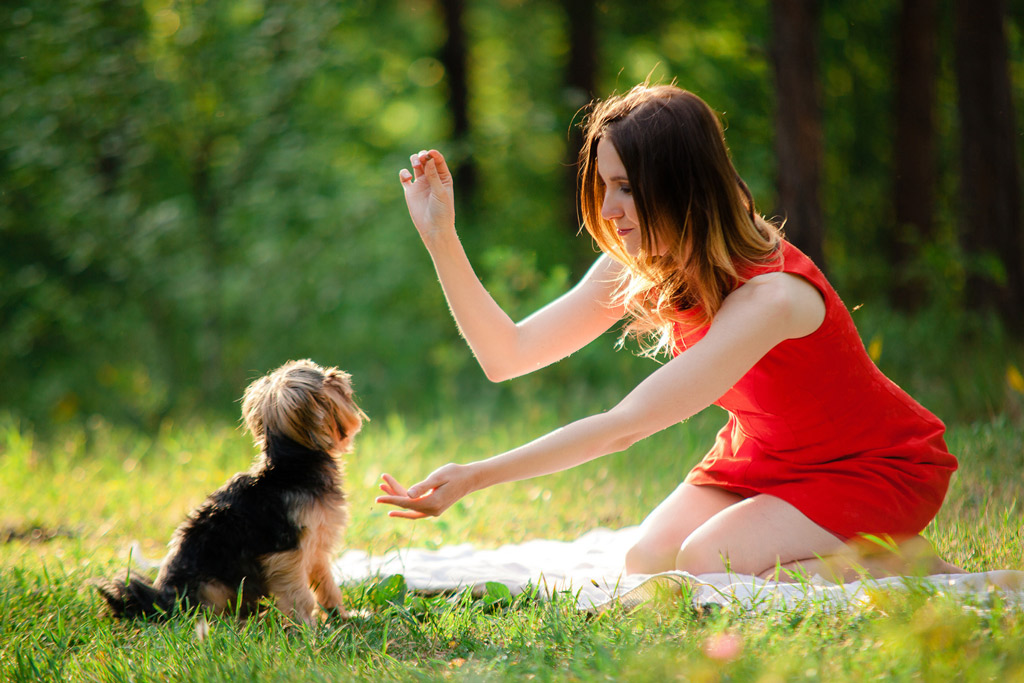
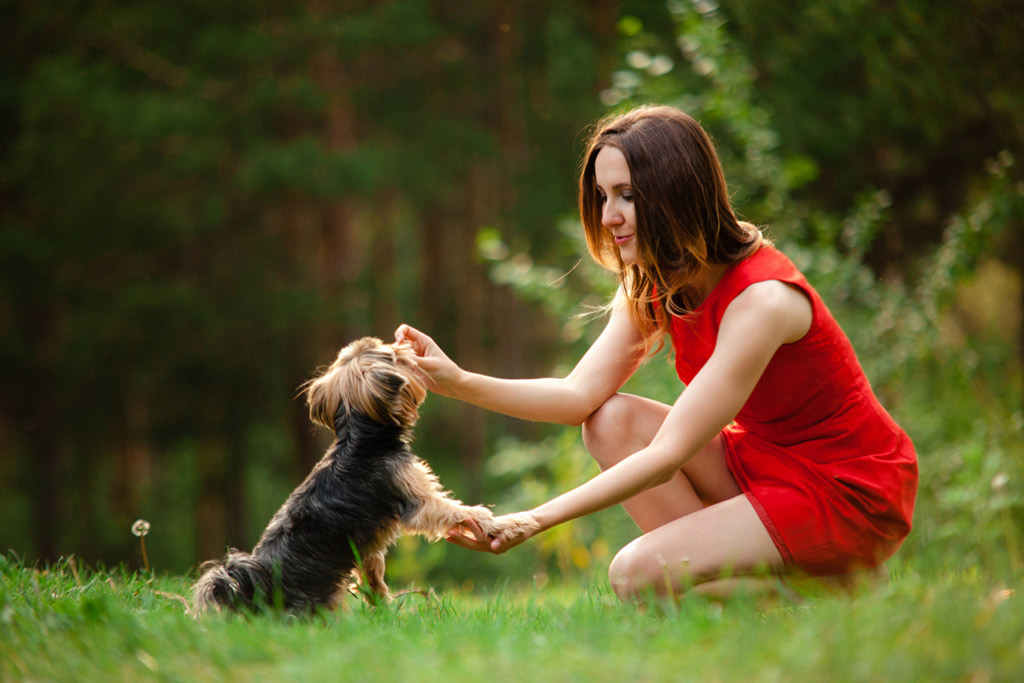
Dog Training Starting Point
Before starting to train your pooch, you can find out where is he at, i.e. if he has received previous training. You might discover your dog can already follow basic commands or you have been informed that your new dog is fully house-trained.
However, it is often worth refreshing their memory especially if they have spent a period of time in kennels, as they may just need to get used to the new environment.
According to The Kennel Club, the first 16 weeks of a puppy’s life goes a long way to producing a well-balanced, sociable dog, who will be less likely to developed unwanted behaviours. Because after that period of time, an important learning and development phases have passed.
But if you are training an adult dog, it may take a little longer for him to learn and retain new behaviours. However, they are more than capable of learning commands and tricks.
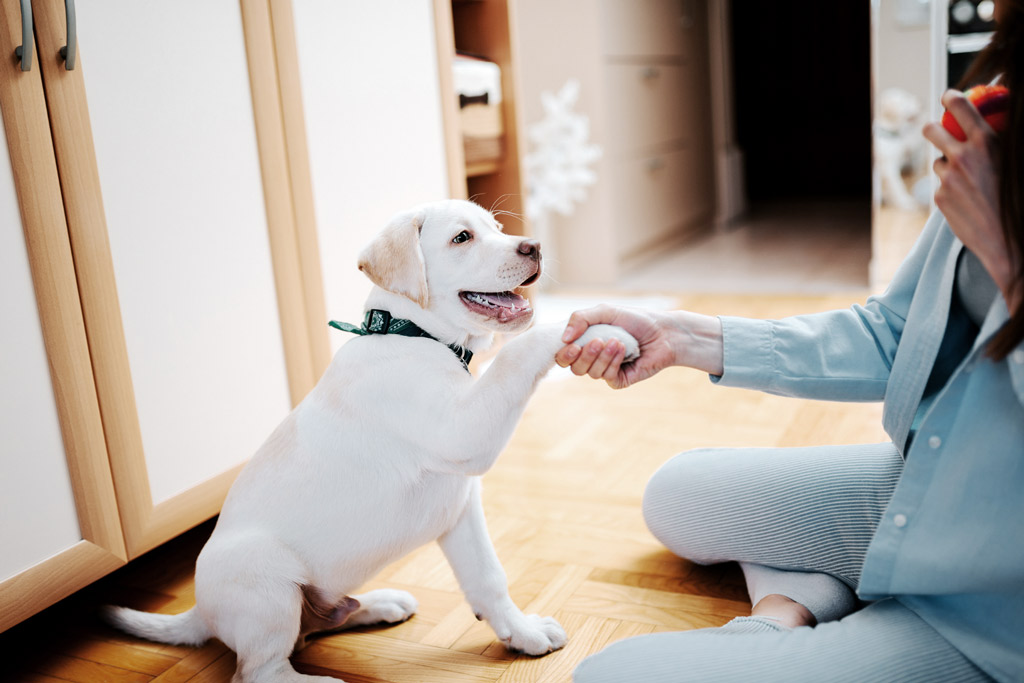
Dog Training Schedule
Every dog has his learning rhythm, but all need consistency in their training. Dog training isn’t an overnight process, and sometimes you might feel that you aren’t making much progress. But don’t get discouraged.
Being consistent is one of the most important parts of dog training. Your dog will learn to follow commands more quickly if you train him and positively reinforce appropriate behaviour consistently, rather than once in a while.
Training is an important task of your dog’s schedule, alongside mealtimes, exercise (walks), playtime, grooming and sleep. Dogs thrive on routine. Once you establish a daily routine, remain consistent on both weekdays and weekends as much as possible. This will help your dog know what to expect and when.
Also, it’s beneficial for housetraining since your dog will begin to learn the exact times he can go outside. For instance, after every meal, he goes for a potty walk to relieve himself.
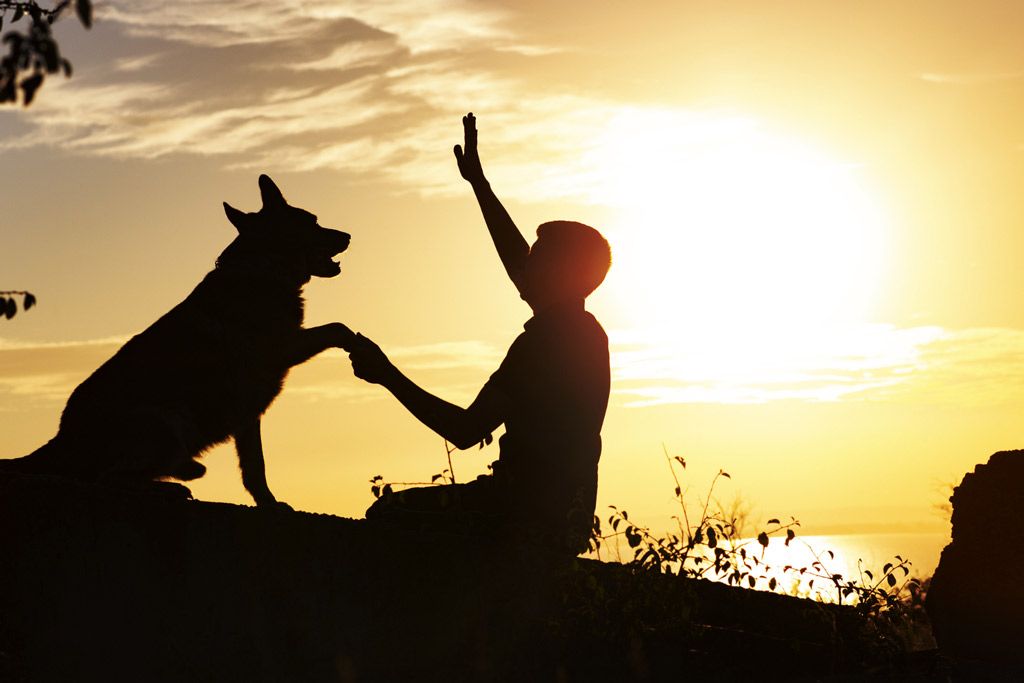
Dog Training Equipment
There are some props that will help you and your dog when you begin house-training your pooch.
Here’s a list of the most useful equipment:
- A dog harness:* Dogs walk better on the lead (i.e. without pulling) if they wear a harness. Also, it gives you better control of your dog when walking him.
- A dog leash:* A short fixed-length leash is ideal to train your dog to walk by your side. However, you might want to use a long lead to train your dog to fetch and come back to you.
- Dog treats: High-quality treats are a great way to reward your dog, just don’t overfeed him. Check our High-Value Dog Treats blog post for ideas and my favourite dog treats for healthy alternatives.
- A dog clicker:* A sound-emitting device that aims to signal your dog that he has done the right thing.
- A crate:* Also referred to as a dog cage or indoor kennel is designed as a safe, secure area that a dog can go into for short periods of time. (Refer to Crate Training further down).
*Note: the links above will take you to Amazon.
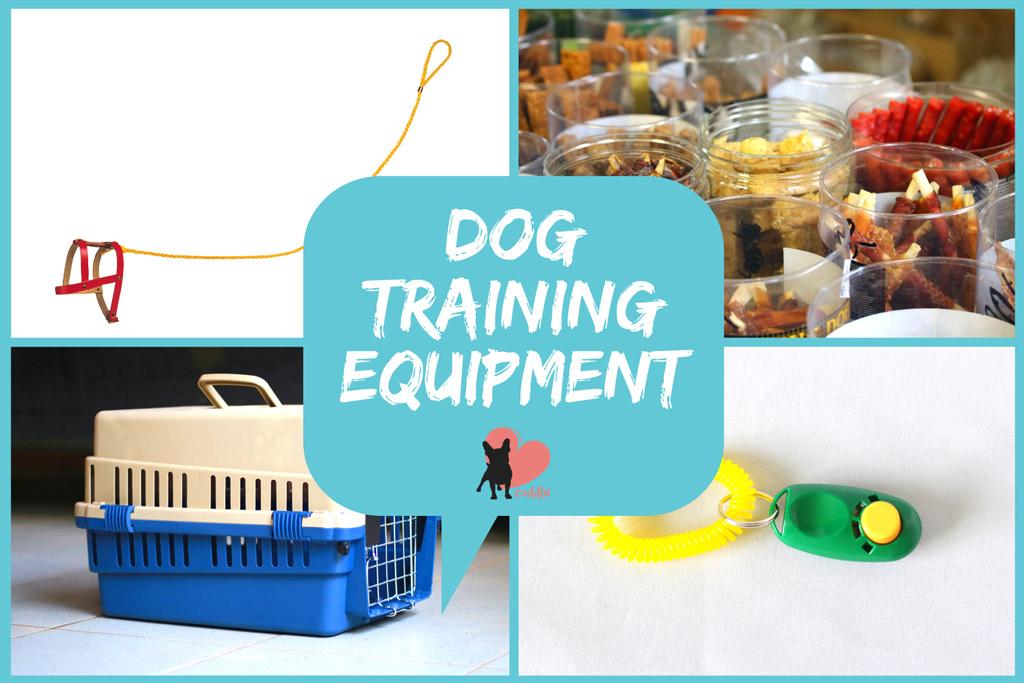
House-Training Your Dog
Training and socialization are among your dog’s care pillars for a healthy and happy dog. That’s why it’s important to start training your dog as soon as possible, regardless of him being a puppy or an adult dog.
At first, dog training can be pretty overwhelming, especially if this is your first dog.
Just take it step by step, let your dog assimilate the new information and give yourself time to feel confident about how you are approaching your doggy’s training.
You can start with 10-15 minute training sessions at a time.
Housebreaking (or house-training) your dog is the first step of his training. It will lay the foundation and also prepare your dog for a lifetime of good behaviour. It consists of:
- Crate training.
- Leash training.
- Potty training.
- Basic commands.
- Socialization.
But before getting started, have you paid attention to what surrounds you while you attempt to train your dog?
Parks and busy neighbourhoods are too distracting. So a boring non-distracting environment is a great alternative. An empty room is ideal, but if we are being realistic, a room with no toys, attractive objects for your dog or other people will do. Your goal is to grab your furry friend’s attention easily.
However, don’t forget having some treats at hand to reward every progress your dog makes. Positive-reward based training encourages good behaviour!
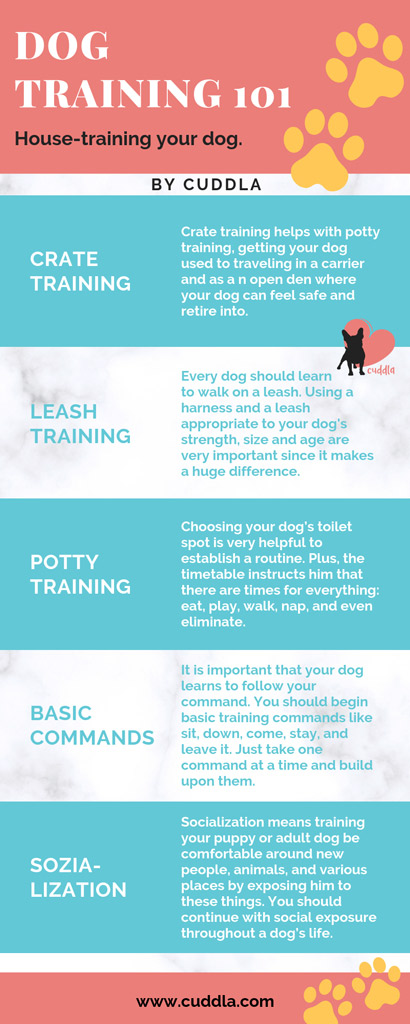
Crate Training
The goal of crate training is that your dog goes into this area on his own. Also when you give him a verbal cue, as opposed to needing to be shoved or coaxed in. And once he’s in, he remains relaxed, comfortable and quiet.
Dog crates have five main purposes in dog training:
- Open ‘den’ area: Some dogs enjoy having an open ‘den’ that they can use as a safe place where they feel secure and can retreat to get away from other pets or children. Also, it works as a bed. Check Dog Space Zone to craft the ultimate space for your pooch!
- Training aid: It can be used to teach dogs to be left alone. Also, it helps with potty training. Dogs won’t willingly relieve themselves in their own beds, so they are highly motivated to “hold it” while in their crate.
- Short-term confinement: You can keep your dog for a short amount of time in his crate when you cannot supervise him.
- Veterinary advised: In some circumstances, a vet may advise the use of a crate to aid recovery after surgery.
- Transportation: Crates can help keep dogs secure and comfortable whilst travelling by car. Check our How do I Get My Dog Into a Carrier? blog post for travel carrier training.
Introduce your pooch to the crate slowly. Begin by letting him sit in there for a few minutes at a time and leave the door open in the beginning. Little by little you can start leaving the dog in his crate for longer periods of time.
But don’t leave him longer than a few hours at a time, since he needs to be taken out to relieve himself (puppies much more often than adult dogs).
Putting your dog’s toys inside, apart from his bed, helps him associate this space with his quiet zone.
Continue using the crate throughout your dog’s training since it helps with potty training because most dogs will not defecate or urinate where they sleep.
Eventually, your dog may prefer to sleep in his crate at night and stay in his den when he wants some quiet time.
If you choose not to crate your dog when you are away from the house, prepare a restricted space for your pooch.
For example, you can have him stay in the hallway with a baby gate blocking the stairs access. Just make sure that they aren’t any hazards for him. Plus, you can use potty training pads (Amazon link) since dogs prefer to urinate on absorbent materials.
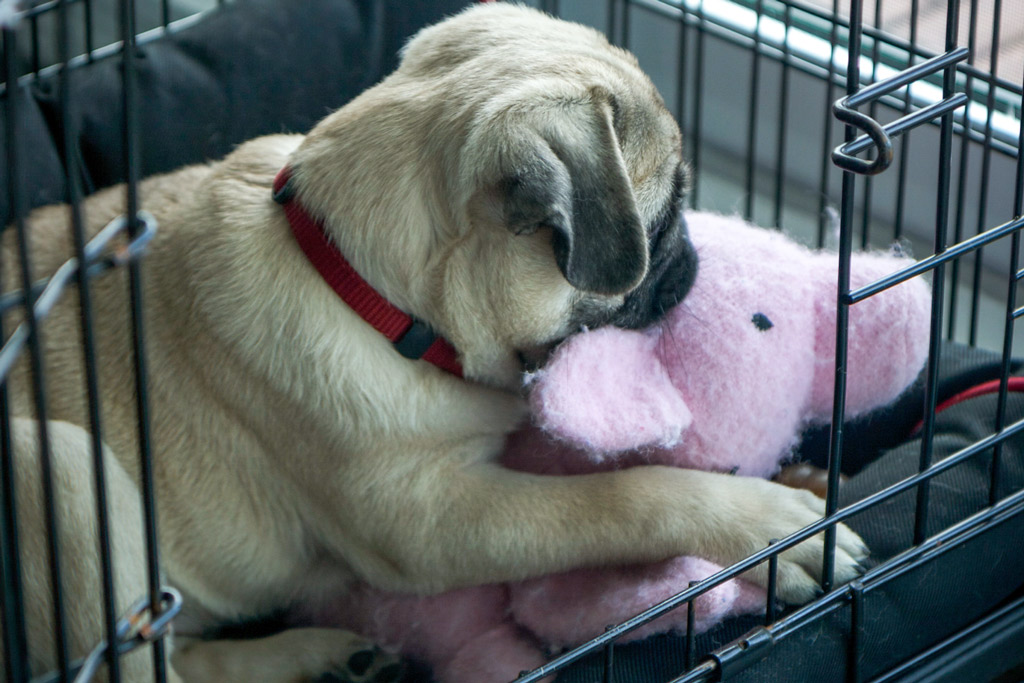
Leash Training
Every dog should learn to walk on a leash. Besides the fact that most areas have leash laws, there will be times when you will want to keep your dog on a leash for his own safety.
Using a harness and a leash appropriate to your dog’s strength, size and age are very important since it makes a huge difference. Here’s why:
Personal Experience: I found out that whenever I tried walking a dog with a collar, no matter if he had leash manners or not, he will pull from the beginning. When switching to a harness, I felt that I had better control to guide the dog with my body language and they seem more comfortable without pressure around their necks. Also, I like using a fixed-length short lead for walks, it helps keeping my dog close by and attentive to the changes in command. Plus, when encountering other dogs, I feel more confident to mantain mine at bay if neccessary.
Again, pay attention to your environment first. Start practising in your home and garden first as there are fewer distractions for your dog.
Once you are happy with his progress, raise the challenge and take him for a walk in the street. Leave parks as a final step of his leash training, since there are many distractions, including other pets.

While walking with your dog, the lead should remain loose. If they pull ahead of you, change directions so that they will end up behind you. You can add a trigger word like “let’s go.”
Insider Tip: Stop occasionally and gently lift up on the lead as you say, ‘sit’; this breaks up the pattern of being pulled. Doing so also creates eye contact and makes it fun.
When you go for a walk, you can also get a toy that your dog likes so that you can make them stay at your side. Just don’t take one that he loves, because it will be too much of a distraction for your dog.
Finally, be patient, since a dog’s natural walking pace is usually twice as fast as the average human’s, so they have to make a big adjustment following your command.
Continue rewarding him for he is accomplishing something that they find difficult.
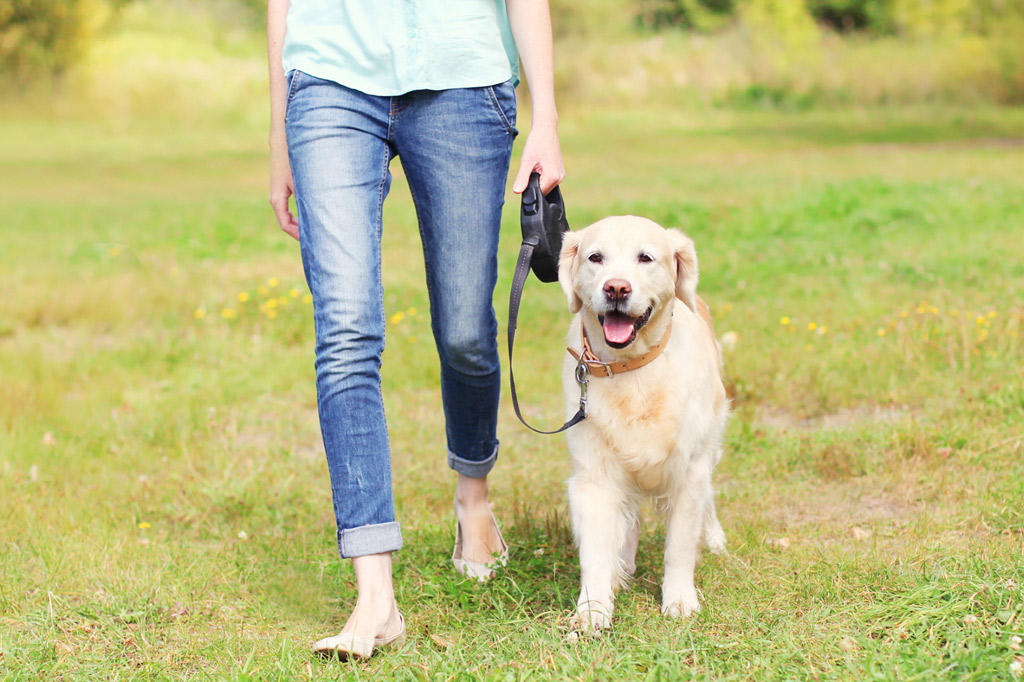
Potty Training
Choosing your dog’s toilet spot is very helpful to establish a routine. Plus, the timetable instructs him that there are times for everything: eat, play, walk, nap, and even eliminate.
A consistent feeding schedule will lead to a consistent elimination schedule.
However, it makes a difference if you keep an eye on your dog so that you can pick up on pre-potty signals.
Keep in mind that as a general rule of thumb, puppies can hold their bladder one hour for every month of life. But avoid getting him too close to his limit in the beginning, until you are more familiar with his elimination needs.
First, you should decide where you want your dog to eliminate. Choose a place that is easily accessible and relatively quiet and that won’t get too muddy.
For instance, choose a corner from the garden that isn’t too close to the streets so your dog won’t get distracted when it’s time for him to do his business. For city dogs, choose a convenient spot near where you live.
But no matter which spot you decide on, it’s important that you train your dog to be comfortable in it. This is actually not a hard thing to accomplish since canines have an extremely powerful sense of smell.
It only takes peeing and pooping once for your doggy to recognize the spot after that. The smell of his pee and poop will trigger your dog’s desire to eliminate and speed-up the whole process.
It is very important to reward him immediately after eliminating on the chosen spot, this way you are encouraging him to repeat good behaviour.
Although it might seem more convenient to let your dog go and eliminate by himself in the garden, it becomes a problem when you are talking him outside on a lead (he will eliminate wherever or not at all).
Training your furry friend to eliminate using a lead will help you take your dog to his potty spot (reinforcing the toilet spot routine) and he will be comfortable going to the toilet wearing a lead (i.e. when going for walks).
Insider Tip: Don’t rush back inside after your dog has eliminated. Give him a treat, caress him or continue with the walk. Otherwise, he may consider it as a punishment and will quickly learn how to hold it in instead of letting it out.
So, take your dog to his potty spot immediately after you let him go outside. Reward him afterwards and then go for a walk. Keeping the routine in this order maximizes the results and your dog will know what to expect!
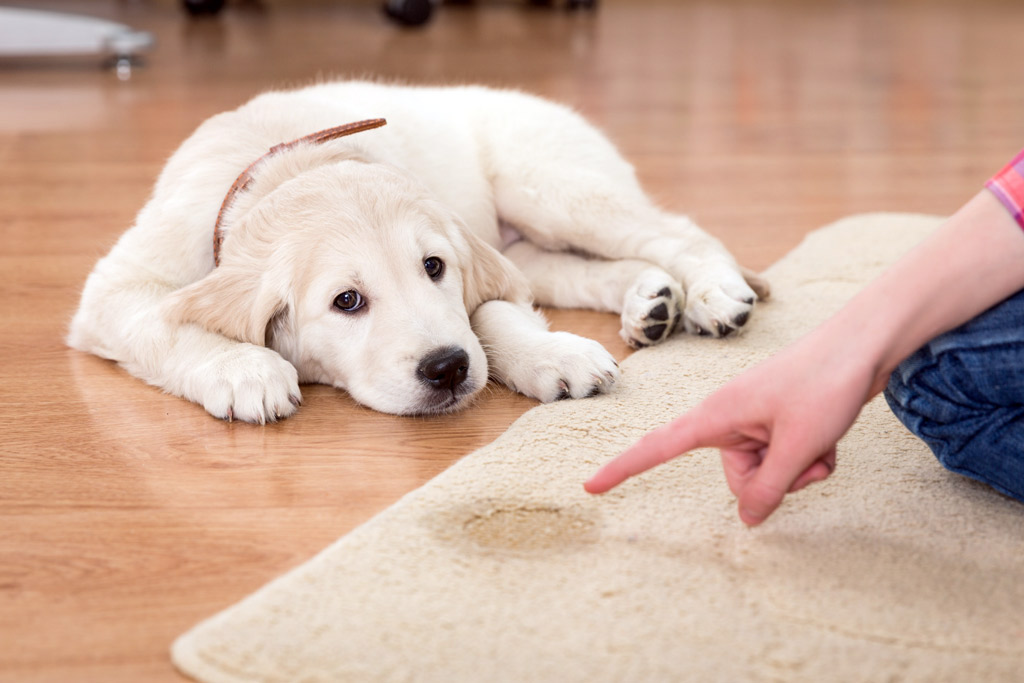
Basic Commands
It is important that your dog learns to follow your command from an early age if you have a puppy and as soon as possible if you have an adult dog. As soon as your dog comes home with you — that very first day — you should begin basic training commands like sit, down, and come.
Just take one command at a time and build upon them. You may find that you need to take it very slowly, working on just one command a day or for a couple of days or weeks then moving on to another command.
Insider Tip: Encourage all members of your household and visitors to use the same commands with your dog to avoid confusion.
Here are some basic commands that will come in handing alongside your dog’s training:
- Sit.
- Down.
- Come.
- Stay.
- Leave it.
P.S. Some people find it helpful to use a clicker (available in Amazon) when teaching basic and advanced commands, and also tricks.
The goal of the clicker is for your dog to recognize the sound with earning a reward for the task performed.
Introduce the clicker first by making the sound and giving a treat after to your dog. Once he associates the sound to the reward, you can move on to using it as part of basic commands training.
This will be as follow: at the exact moment your dog performs the desired action, press the clicker, then give him a treat and praise.
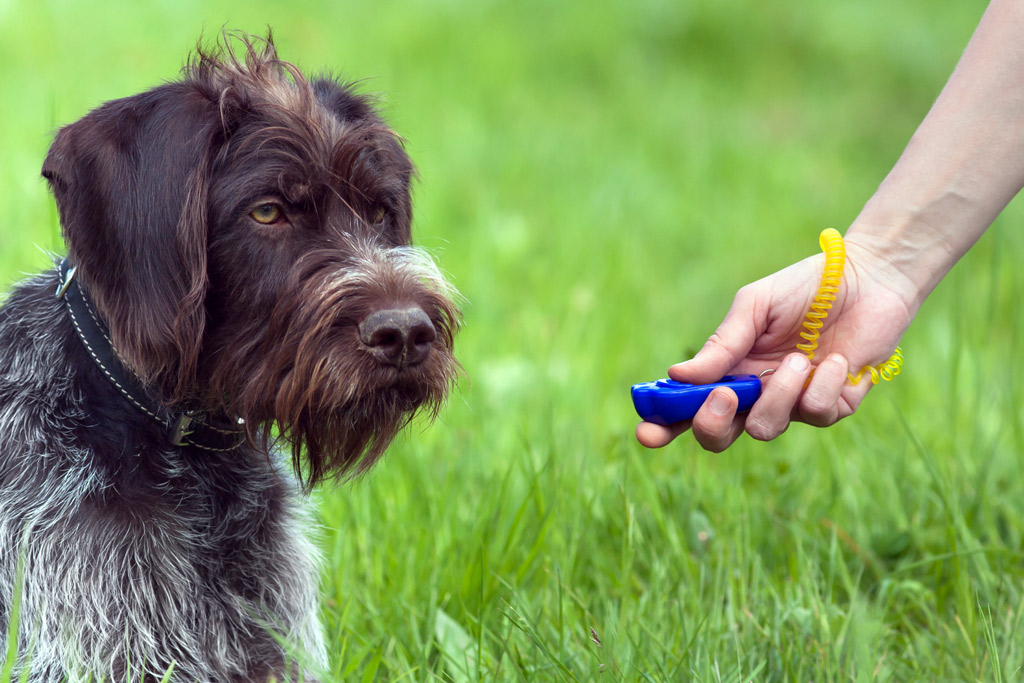
Sit Command
This is one of the easiest dog obedience commands to teach, so it’s a good one to start with.
- Have your dog standing in front of you.
- Show him that you have a treat in your hand.
- Move your hand up and over your dog’s head, allowing his head to follow the treat and causing his bottom to lower.
- Once he’s in sitting position, say “sit,” give him the treat and praise him.
Dogs need to learn the action first, so they can associate it with the verbal cue later.
Down Command
Like “sit,” you can start training your dog the “down” cue with a treat.
- Start with your dog sitting in front of you.
- Hold a treat near his face.
- Move the treat straight down to the floor, and then slowly away from the dog. He will follow the treat by moving his front feet forward, eventually lying down.
- Be clear with your movements, and once your dog lies down, say “down” and give him the treat.
You can also practise this cue without a treat, using your hand to indicate him to go down (like in the photo below).
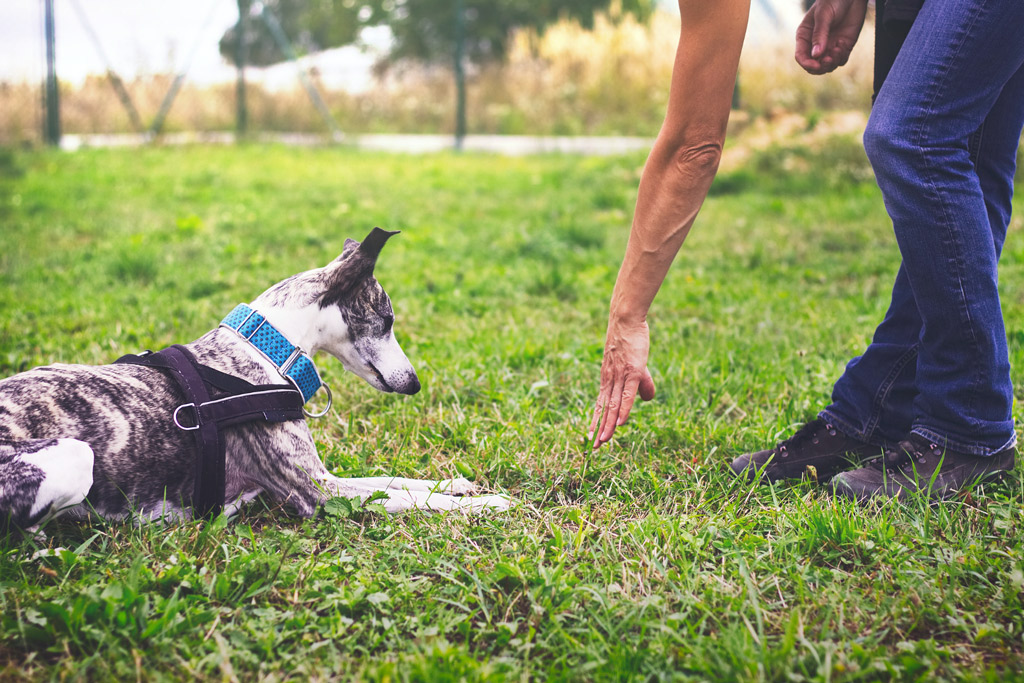
Come Command
Coming when called is a basic command you want to teach your dog because it can keep him safe in potentially dangerous situations (for example, you accidentally lose grip of the leash).
- Put a harness and leash on your dog in a quiet area.
- Back away from your dog, go down to his level and enthusiastically say “come.” Alternatively, you can show your dog a treat to encourage him to head your way if he appears reluctant to move.
- When he gets to you, reward him with affection and a treat.
Once your dog masters it with the leash, you can practice the command without the leash in a safe, enclosed area. Over time, you can gradually increase the distance between the two of you, and start practising in a variety of situations.
Insider Tip: “Make it a party” every time your dog comes when called. You want him to associate coming to you as the best thing that happens to them all day. This way, it won’t matter to him what he leaves behind.
Stay Command
Before attempting this one, make sure your dog is an expert at the “Sit” command.
- First, ask your dog to “sit.”
- Hold a hand out in front of you (palm open) toward your dog and say “stay.”
- Take a few steps back, if he stays, immediately reward him with a treat and affection.
Gradually increase your distance from your dog and continue practising. This is an exercise in self-control for your dog, which is particularly difficult for puppies and high-energy dogs. So don’t be discouraged if it takes a while for your pooch to master, after all, he would rather be moving around!
Leave It Command
This cue can help keep your dog safe when his curiosity gets the better of him (for instance, he steals some table scraps). The goal is to teach your pooch that he always gets something better for ignoring the other item.
- Place a treat in both hands.
- Show him one enclosed fist with the treat inside, and say, “leave it.”
- Let him lick, sniff, mouth, paw, bark… to try to get it. Ignore these behaviours.
- Once he stops trying, give him the treat from the other hand.
Repeat this process until your dog moves away from that first fist when you say, “leave it.”
Next, practice only giving your dog the treat when he moves away from that first fist and also looks up at you (i.e., he gives you eye-contact).

Other Commands and Tricks
If your dog knows many basic commands, you can work on teaching him tricks and more advanced commands in the week after working on walks.
This might include fun tricks such as “rollover” and if your dog has a pretty firm grasp on walking on a loose leash, the “heel” command to instil a little more control on walks.
Tricks are not essential but learning new things is vital for your dog’s mental stimulation and to avoid boredom (which brings unwanted behaviours).
Check my favourite dog training method for brain games to keep your dog engaged and have fun with him.
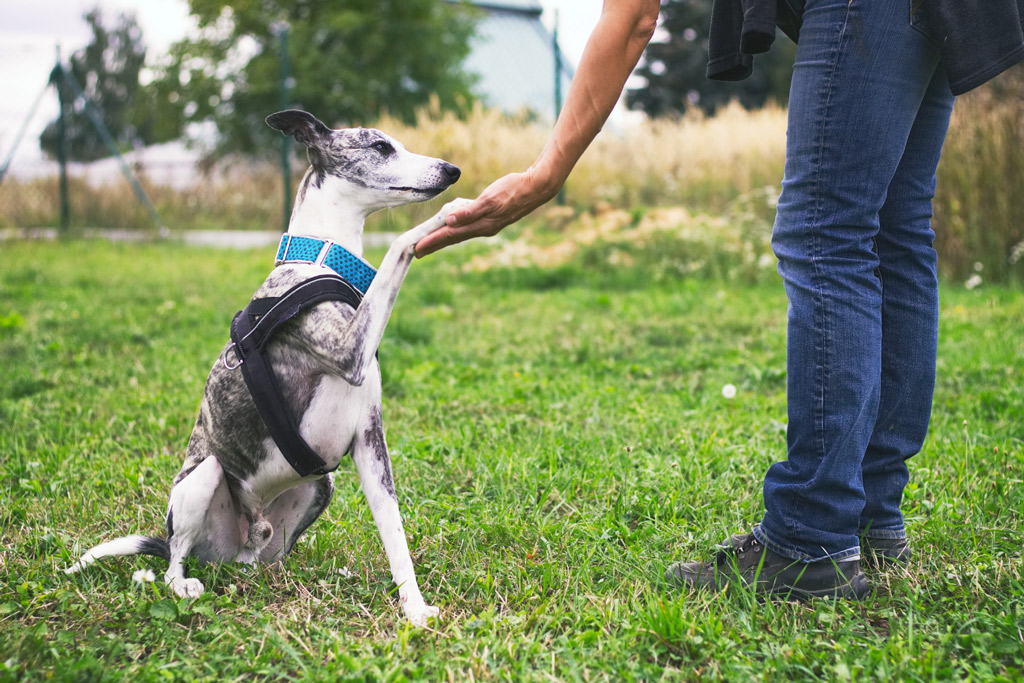
Socialization
Socialization means training your puppy or adult dog be comfortable around new people, animals, and various places by exposing him to these things.
Socializing your dog has many benefits, like:
- Being less likely to develop behaviour problems.
- Generally being more welcomed by others.
- Prevent possible fears and phobias.
According to The American Veterinary Society of Animal Behavior, the first three months of a puppy’s life the most important time for socialization.
Puppies progress through learning and development stages just as human children do. By exposing our dogs to different kinds of people, animals and environments, we can help them develop their confidence and maintain calm during less frequent situations.
However, socialization is not just for puppies – you should continue with social exposure throughout a dog’s life.
Here are some examples of how to socialize your pooch:
- People: Invite friends and family over (not all in one go) from the beginning. Also, consider taking your pooch with you when visiting a friend (as long as that’s ok with your friend). This means that he will get used to other people being around and touching him too.
- Environment: Let your dog be familiar with your house first (sounds, smells, etc.). You can also play sounds to him (thunderstorms and fireworks sound, for instance, since are common triggers for dogs).
- Other Dogs: Take your doggy to a park and introduce one doggy at a time.
Practise socialization gradually and always keep an eye on your dog, especially to see how he reacts. Also, pay attention to your own body language, since dogs are able to read it very accurately, i.e., you should stay calm too.
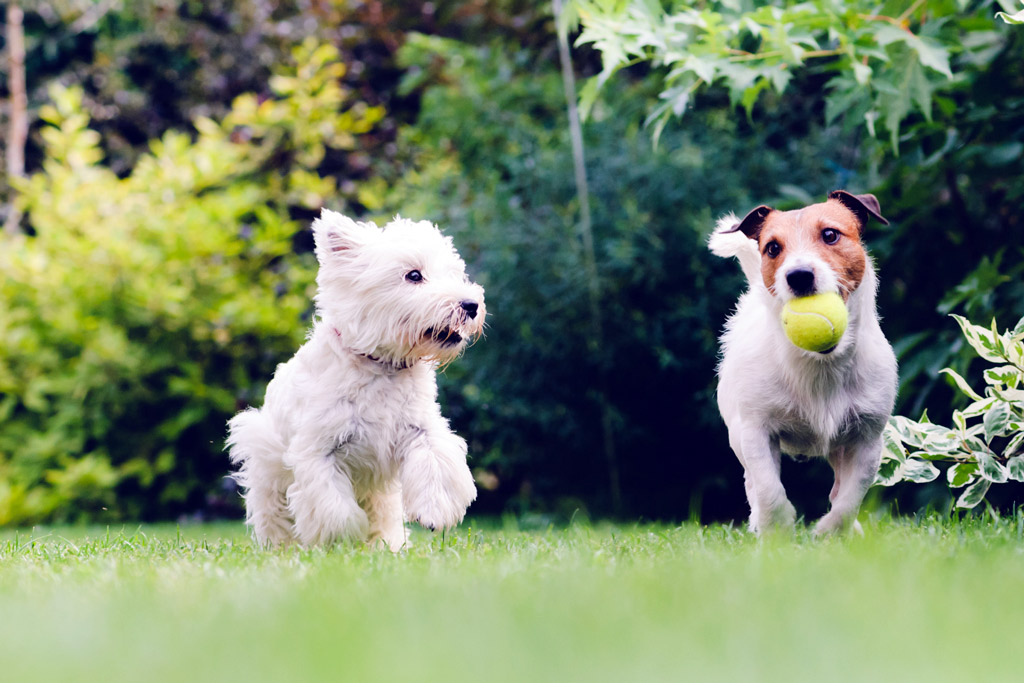
Dog Training 101 Insider Tips
Every time you start a new training or teaching your dog something new, you should:
- Start training in a boring environment.
- Do one goal at a time.
- Communicate clearly using the same commands and gestures.
- Reward your dog immediately after every accomplishment.
- Practise regularly since consistency is key for their learning.
- Take it slow, every dog has his learning pace.
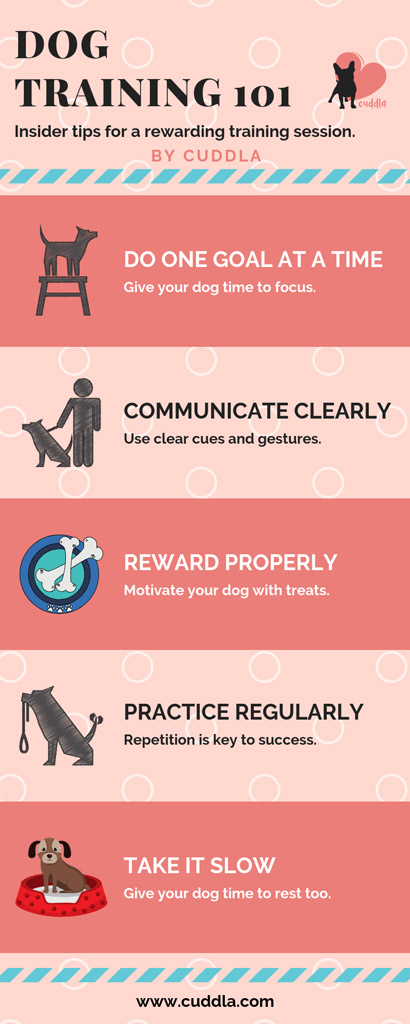
P.S. If you want to teach your dog new tricks in a fun and highly rewarding way, check my favourite training method.
Because Accidents Will Happen…
During dog house-training, home accidents are inevitable, however how you respond to them will prevent future accidents.
These are the three scenarios you can find yourself in:
- You catch your dog in the act.
- You find the evidence.
- Your house-trained dog is still having accidents indoors.
And here is what you can do when you find yourself in each situation:
What To Do If You Catch Your Dog In The Act
If you catch your dog toileting indoors or you think they are about to go, try and interrupt them by calling them in an excited tone and get them into the garden.
It’s important NOT to punish your dog because they may come to associate going to the toilet in front of you with punishment. In the future, your dog may worry about going to the toilet in front of you and wait until you get home to sneak off into a hidden place.
Even if your dog initially makes a mistake, make sure you give lots of praise when they go to the toilet outside.
What To Do If You Find The Evidence
If you don’t catch your dog in the act because you weren’t present, there is nothing you can do. Reprimanding the dog after the act will have no effect. They will not associate the punishment with the earlier accident.
When cleaning up after your dog’s accident it is important that the area is always cleaned properly. Avoid any household detergents that contain ammonia. This is a natural chemical that occurs in your dog’s urine and will encourage them to mark the area again.
What To Do If Your House-Trained Dog Is Still Having Accidents Indoors
As well as not being housetrained, there are many other reasons why a dog will go to the toilet in the house. For example, they might relieve themselves because they are stressed about being left alone.
Dogs are social creatures who get lonely and bored when forced to stay alone for long stretches. If you are concerned about your dog being alone at home, check our How to Calm Dog Fears and Anxiety blog post.
However, if you suspect there is an underlying problem and the steps above are not working, you can:
- Call your vet for advice.
- Research for a reward-based behaviourist.
- Find a dog trainer.
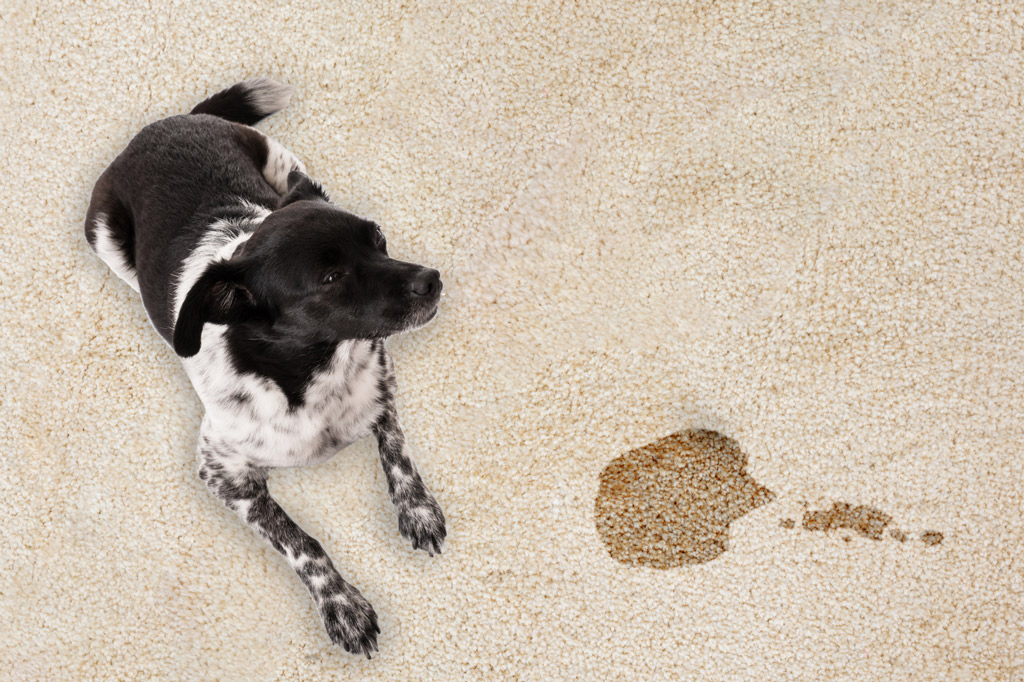
We hope you find the following tips useful for your training duty! Let us know about your progress!
